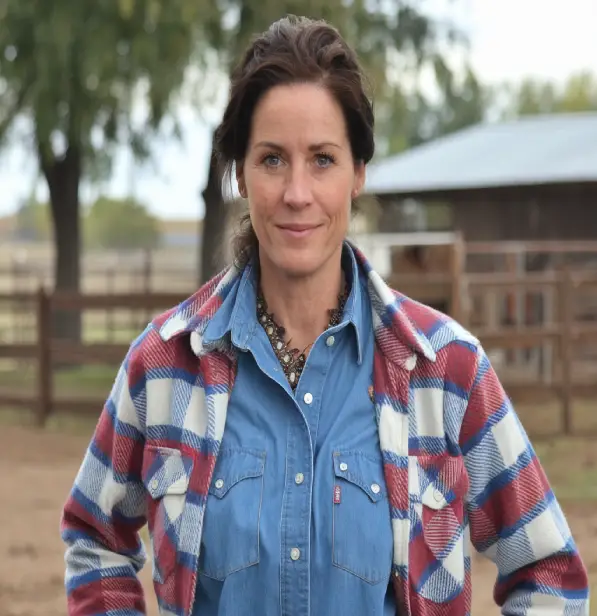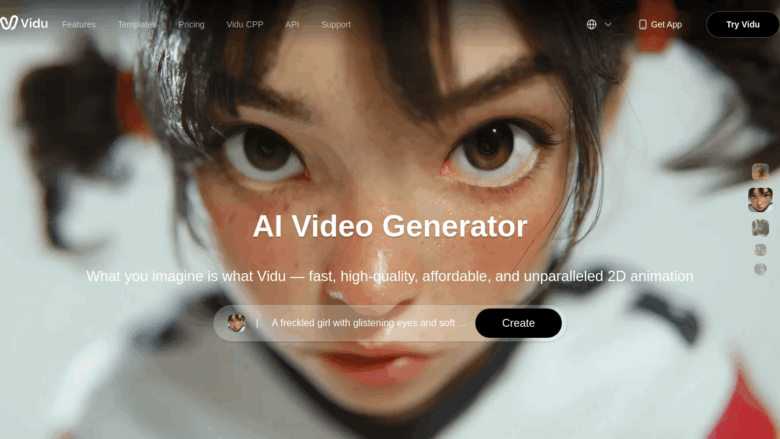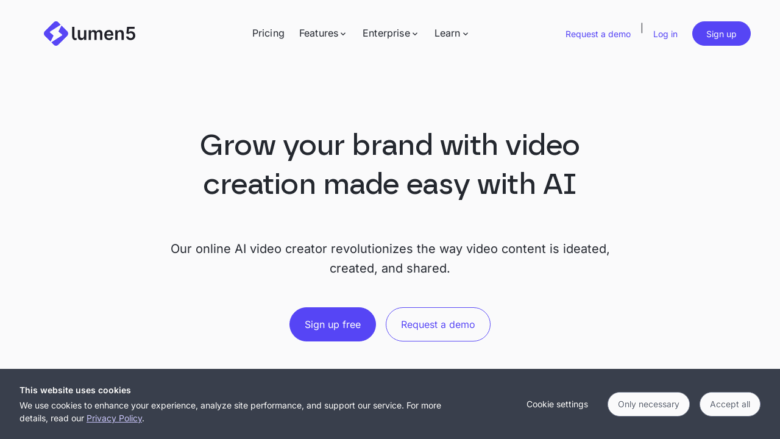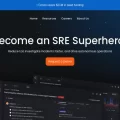Hey there, fellow tech enthusiasts! Today I’m diving deep into Kling AI, this mind-blowing AI creative studio that’s been making waves in the content creation world. If you’ve been searching for “best AI video generator 2025” or “realistic AI video creation tools,” you’re in for a treat. But before we jump in, let me tell you—Kling isn’t just another text-to-video tool; it’s reshaping how we think about digital content creation.
What Is Kling AI and Why Should You Care?
Kling AI is a next-generation AI creative studio developed by Kuaishou, one of China’s biggest short video platforms. While they might not be on everyone’s radar globally, they’ve been causing quite a stir in the AI scene with their advanced video generation capabilities.
What sets Kling apart from your average “AI video maker free trial” options is its sophisticated 3D spatiotemporal joint attention mechanism (fancy tech speak for incredibly lifelike motion generation). This technology enables the platform to create high-quality, cinematic video clips from just a text prompt or single image.
I spent weeks playing with Kling AI—generating everything from serene landscapes to complex character interactions—and I’m genuinely impressed by how it handles motion, camera transitions, and overall video quality.
Technical Specifications: The Nerdy Details You Actually Want to Know
For those of you searching for “high quality AI video generation specs” or “professional AI video resolution,” here’s what Kling delivers:
-
Video Resolution: Full HD 1080p (with 4K in development)
-
Frame Rate: Impressive 30 frames per second for smooth motion
-
Video Length: Can generate up to 2-minute clips (which is substantial in the AI video space)
-
Processing Time: 3-5 minutes for simple videos; up to 8 minutes for complex settings on paid plans (free users may experience generation times exceeding 3 hours)
Kling utilizes Diffusion Transformer Architecture to maintain frame coherence, which significantly reduces the flickering and inconsistencies that plague many other AI video generators. If you’ve been searching for “AI video without flickering” or “smooth AI motion generation,” this is a noteworthy feature.
Core Features That Make Kling AI Stand Out
Text-to-Video Generation
If you’re looking for “AI text prompt to video converter” solutions, Kling’s text-to-video feature is robust. You simply input a written description, and the AI generates a short video matching your vision.
For example, when I typed “a surfer riding a massive wave at sunset with golden light reflecting off the water,” Kling produced a surprisingly realistic clip that captured both the motion and atmosphere I was going for. The system interprets your prompt and renders a scene that feels cinematically appropriate—though I’ve found that simpler, more direct prompts tend to yield better results than overly complex or abstract concepts.
Image-to-Video Animation
The image-to-video feature is perfect for those searching for “how to animate still photos” or “bring photographs to life with AI.” This feature takes static images and adds subtle animations—think blinking eyes, slight head movements, or environmental effects like blowing leaves or rippling water.
I tested this by uploading a portrait photo and adding the prompt “gentle wind blowing through hair,” and Kling managed to create a natural-looking animation that wasn’t over-the-top or uncanny. It’s subtle enough to seem realistic but noticeable enough to engage viewers.
3D Face and Body Reconstruction
One of Kling’s most impressive features—and something people often search for with terms like “realistic AI character animation” or “natural AI body movement”—is its 3D face and body reconstruction technology. This deep learning-based technique generates accurate facial expressions and body movements in three-dimensional space.
This means characters in your videos move naturally with realistic proportions, which is crucial for creating believable scenes in different settings and moods. Whether it’s characters moving in emergency situations, hiding, or expressing panic, the motion looks fluid and convincing. This capability has apparently been drawing creators away from other tools like Sora to Kling 1.6.
Advanced Input Options
For those who want granular control (often searching for “advanced AI video customization” or “detailed AI video parameters”), Kling 1.6 offers:
-
Multiple input formats (text, single/multiple images)
-
Lip-sync capabilities
-
Negative prompts to exclude unwanted elements
-
Various style settings for customization
The platform also includes built-in AI effects like Bloom, Boom, Mochi, Fuzzy, and Dizzy, though these do consume additional credits.
Strengths and Weaknesses: The Real Talk
What Kling AI Does Well
If you’ve been searching for “most realistic AI video generator 2025” or “cinema-quality AI videos,” here’s why Kling might be your answer:
-
Realistic Visuals: Kling generates life-like visuals with smooth motion that approaches the quality of Google Veo 2 for studio-grade generation.
-
Prompt Accuracy: Kling 1.6 excels at following prompts for expressive emotions and detailed character movements, with a reported 95% match rate for setting-specific complex scenes.
-
Cost Efficiency: Compared to pricier options like Google Veo 2 and PixVerse 3.5, Kling offers similar quality at more accessible price points.
-
Sound Integration: Unlike many competitors, Kling supports AI music generation, allowing users to create videos with synchronized sound.
Where Kling AI Falls Short
For those researching “AI video generator limitations” or “Kling AI drawbacks,” here are the honest downsides:
-
Processing Time: As mentioned earlier, generation can take 3-8 minutes on paid plans, with free users experiencing much longer waits (sometimes over 3 hours).
-
Inconsistent Results with Complex Prompts: While Kling handles simple scenes well, it sometimes struggles with rendering fantastical creatures convincingly, and motion can occasionally appear unnatural in more complex scenarios.
-
Limited Video Length: While 2 minutes is good for the current AI video space, it’s still restrictive for many professional applications.
Kling AI vs. Competitors: How Does It Stack Up?
If you’re researching “best AI video generator comparison 2025” or “Kling vs Runway vs Google Veo,” here’s a breakdown of how Kling compares to its main competitors:
Kling AI vs. Haiper AI
Kling and Haiper serve different needs in the AI video generation space. Kling focuses on longer, more cinematic content with high visual fidelity, making it ideal for storytelling and structured videos. Meanwhile, Haiper specializes in short, snappy, stylized animations (typically 2-8 seconds) perfect for social media and product demos.
Haiper is known for being extremely user-friendly and quick, with fast rendering times “often within minutes.” If you’re searching for “quick AI social media videos” or “stylized AI animations,” Haiper might be your go-to, while those looking for “cinematic AI storytelling” would prefer Kling.
Kling AI vs. Runway ML Gen-3 Alpha
When comparing video quality and consistency, Runway ML often produces more consistent results across a wider range of prompts. Its AI excels at rendering both realistic and fantastical scenes with more natural motion.
Runway also offers more diverse image manipulation abilities and superior control over the final output. However, Kling AI’s user interface is more intuitive and easier to navigate, especially for beginners. Those searching for “beginner-friendly AI video tools” might prefer Kling, while “advanced AI video customization” seekers might lean toward Runway.
Kling AI vs. Google Veo 2 and PixVerse 3.5
Google Veo 2 and PixVerse 3.5 are considered premium options in the AI video generation space, offering higher quality but at significantly higher price points. Kling approaches Google Veo 2’s quality for studio-grade generation but at a more affordable price.
For those searching “affordable alternative to Google Veo” or “budget-friendly professional AI videos,” Kling represents a compelling middle ground between quality and cost.
Who Should Use Kling AI?
If you’re searching for “best AI video tool for filmmakers” or “AI video for content creators,” Kling is particularly well-suited for:
-
Filmmakers and Content Creators: The cinematic quality and expressive motion make Kling ideal for storyboarding, conceptualization, and even producing finished segments.
-
Marketing Teams: Those needing high-quality, engaging video content without massive production budgets.
-
Educators and Explainers: Teachers or instructional designers who want to create engaging visual content from text descriptions.
-
Social Media Managers: Those searching for “AI video for social media engagement” will appreciate Kling’s ability to create scroll-stopping content.
-
Independent Creators: The platform’s availability through Hugging Face and Segmind makes it accessible to indie creators wanting to tell immersive visual stories without breaking the bank.
Pricing and Accessibility
Kling AI offers both free and paid plans. While specific pricing wasn’t detailed in our research, it’s described as “more cost-efficient” compared to premium options like Google Veo 2 and PixVerse 3.5.
Credit utilization varies based on settings and customizations, with additional effects consuming extra credits. The free version provides access to basic features but with significantly longer generation times.
For those searching “how to access Kling AI” or “Kling AI availability,” it’s worth noting that Kling has been gradually rolling out to Western markets through platforms like Hugging Face and Segmind. It’s also available through integrated platforms like Stockimg AI, which allows users to create short videos at lower costs than standalone platforms.
The Technical Architecture Behind Kling AI
For those interested in “how AI video generation works” or “AI video technical framework,” Kling’s capabilities are built on sophisticated AI architecture. The platform uses a 3D spatiotemporal joint attention mechanism that enables realistic motion generation.
For frame coherence, it employs Diffusion Transformer Architecture that reduces flickering and inconsistencies between frames. The 3D face and body reconstruction technology utilizes deep learning-based 3D modeling to reconstruct facial structures, expressions, and body postures from 2D inputs.
The system also integrates pose estimation and joint tracking, enabling more dynamic and responsive character animation—particularly useful for cinematic storytelling, digital avatars, and AI-supported filmmaking.
Final Thoughts: Is Kling AI Worth Your Time?
As someone who’s spent countless hours testing AI video generators, I can confidently say that Kling AI represents an impressive balance of quality, usability, and affordability in the current landscape. For those looking for “professional AI videos without expensive equipment” or “cinematic AI generation on a budget,” it deserves serious consideration.
While it has limitations—particularly around processing time and handling extremely complex prompts—its strengths in creating realistic, emotionally expressive content make it a valuable tool for creators across many disciplines.
Whether you’re a filmmaker looking to visualize concepts before shooting, a content creator needing engaging social media videos, or just someone curious about the cutting edge of AI creativity, Kling AI offers an accessible entry point into the future of video generation.











